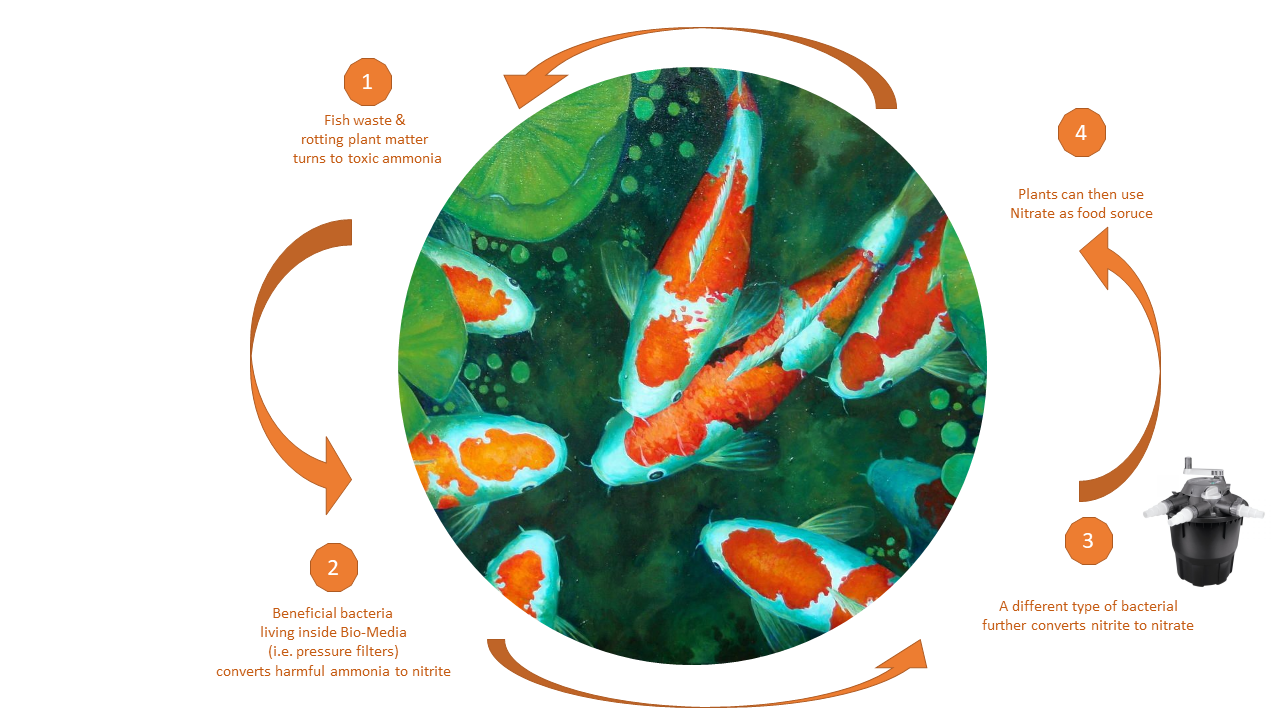Pond care & Filtration

Whether you are a beginner or experienced water gardener, you will probably have ine objective and that is a clear, clean & healthy pond.
Ponds will be affected by many factors, sucha as unconsumexd fish food, vegetation and fish excrement.
If these are allowed to accumulate this will result in a green pond and may even be harmful for your fish.
The use of biological filtration will remove these toxins and provide a clean quality water.
Pond filters usually combine both mechanical and biologival filtration systems.
The mechanical filter removes solids, whilst the biological filtration is the converting of toxic pollutants in the water by the bacteria living in the bio media.
To maintain a healthy and clean pond the following points are quite important,
1) EQUIPMENT & MATERIALS OF A CAPABLE SIZE : Filter sizing is based on pond volume calculations and fish stocking densities. Always go bigger to get better results
2) WATER CIRCULATION : Make sure that the water passes thru the filter by placing pump at one end and the bio filter at the other
3) CONTINUOS CIRCULATION : Pond filter needs to run 24 x 7. Bacteria may die if without oxygen and water
4) DON'T OVERSTOCK POND : Ideal stocking levels are 50cm of fish per 1000L, remember to allow for fish growth
5) USE WATER PLANTS : Water plants maintain the eco system in ponds by removing nitrates
6) DONT OVER FEED FISH : Overfeeding increases the danger of polluting the pond. Remeber fish consumes less food in winter months
7) REMOVE / RESTRICT POLLUTANTS & DEBRIS : Leaves, debris and fertiliser that enter the pond will all break down as ammonia which is toxic to aquatic lives. Remember to remove them.







